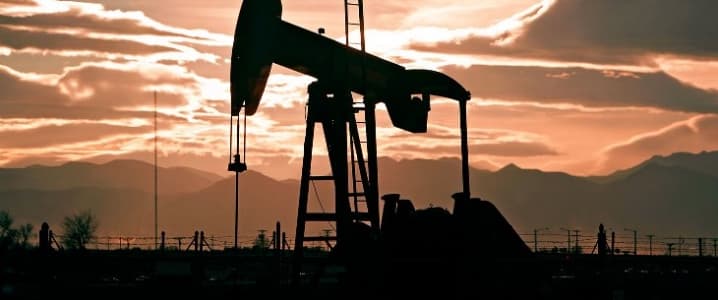The Shale oil industry has revolutionized the oil markets, rendering the once powerful OPEC oil cartel powerless in dictating the price and production of oil. The shale oil producers have taken the battle to OPEC head on, and have not only survived, but have won it in some aspects. They have forced OPEC and Saudi Arabia to change their initial strategy of maintaining high production in the wake of falling oil prices to gain market share.
The production cut of 1.8 million barrels of oil a few years back would have led to a massive spike in oil prices; however, in 2016, it has barely managed to nudge prices above the $52 per barrel mark. Fears of shale oil producers ramping up production with higher oil prices have kept the oil bulls in check. The bears, on the other hand, are waiting for any signs of cheating from the OPEC nations and Russia in following their production quotas.
However, earth scientist David Hughes has critiqued the Energy Information Administration’s Annual energy outlook report on various factors like total recoverable oil, advances in production, ability of shale oil drillers to continue pumping oil at low oil prices, and the peak production from the various basins.
Hughes concludes that the EIA’s AEO 2016 is not only overly optimistic, but the frequent changes in the report--every year from 2014 to 2016--puts a question mark on the EIA’s forecasting methods.
(Click to enlarge)
The difference in the assumption between the EIA’s estimates and Hughes’ estimates diverge greatly after the 2020 period, when Hughes sees a sharp drop in production every year until 2040, whereas, the EIA continues to see an increase in production till 2040.
One of the two forecasts is wrong, and the difference between the right and the wrong is huge. Related: Musk’s Space X: Down But Not Out
The EIA uses a complex program for forecasting, known as the National Energy Modelling System (NEMS), which has been developed by the NEMS. “Most people who have requested NEMS in the past have found out that it was too difficult or rigid to use,” says the NEMS link.
Hence, without understanding the program, it is incorrect to completely question its reliability.
Nonetheless, being a trader and a stock market investor, I would like to look at what the shale oil companies are doing.
In 2016, the ‘hot’ Permian basin play has seen acreage prices skyrocket while crude oil prices are still quoting close to 50 percent of what they were in 2014.
In the past few weeks, companies have paid higher than $40,000 an acre for drilling leases, whereas, in 2014, the price for similar drilling leases was close to $5000 an acre, when crude quoted close to $100 a barrel. That’s an increase of more than eight times, at half the price of crude oil.
Recently, the Denver-based SM Energy Co paid close to $42,600 an acre, according to 1Derrick, an oil industry information provider.
It was surprising when Jennifer Samuels, SM’s head of investor relations, said the company was willing to pay more because “you see the potential for more wells per section than you did two years ago,” yielding more oil, as reported by The Wall Street Journal.
The top three expensive deals in the Midland Basin in 2014 had an average of $38,300 per acre, however, in 2016 it has increased to close to $49,000 per acre. Similarly, in the Delaware Basin, the biggest acquisition in 2014 had paid just $14,615 per acre, whereas, this year the top price is $48.157 per acre, as reported by CNBC.
This is an important point to note because producers are paying much higher prices than 2014 even when crude is unlikely to quote near the $100/barrel mark for years to come. Companies are unlikely to invest in this difficult environment unless they are certain of huge gains even at the current low oil prices. Related: Geothermal On Steroids: Drilling The World’s Hottest Hole
In a study on productivity of the shale companies published by ‘The Oxford Institute For Energy Studies’, titled, “Unravelling the U.S. Shale Productivity Gains,” by Trisha Curtis, Co-Founder PetroNerds & OIES Research Associate, the author found that all the gains are not because of high-grading the sweet spots.
ADVERTISEMENT
The producers have devoted time and money to “study assets and reservoirs and to dedicate capital to G&G (Geological and Geophysical) investments. Operators are gaining a greater understanding of the geology and rock quality while also making use of more efficient rigs, geo-steering technology, longer laterals, and increased horsepower and pumping pressure”.
“In general, operators tend to attribute half the cost savings to service providers and vendor price cuts and roughly half to internal efficiency gains and operational improvements,” said Curtis in the report.
Though I am not a scientist, as a trader, I would stick with the EIA’s report and place my future forecasts based on its report, though I would keep Hughes’ report at the back of my mind, to return to it if I find that shale oil production is stuttering as Hughes forecasts.
By Rakesh Upadhyay for Oilprice.com
More Top Reads From Oilprice.com:
- Why Oil Markets Don’t Have To Worry About Libya
- ‘’EVs, Solar Could Push Oil Down To $10 By 2025’’
- U.S. Shale Is Now Cash Flow Neutral



















